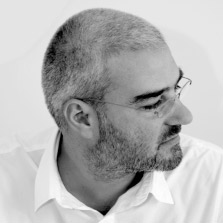The School of Tourism and Hotel Management is the first building of the Robinson Cork Factory restored by Eduardo Souto de Moura and Graça Correia. Together with the other two constructions of the complex, the Car Park and the Auditorium, these buildings occupy the space freed in the central area of Portoalegre because of the transfer of the factory.
Description of the project by Souto de Moura and Graça Correia
The restoration of the Robinson Cork Factory.
The Portuguese town of Portalegre is situated at the edge of the Parque Natural da Serra de São Mamede, a few kilometers from the border with Extremadura, Spain. Traditionally linked to the textile industry since the seventeenth century, the creation of the Robinson cork factory in the nineteenth century has been an important economic catalyst for the city.
The subsequent transfer of the factory to a new industrial area on the outskirts freed a 60,000 square meter lot in a central area of Portalegre, comprising an important industrial heritage of hangars, warehouses and offices. Inspired by examples of recovery in industrial memory as the Pompeia factory in Sao Paulo by Lina Bo Bardi, the enclosure management plan by Souto de Moura and Graça Correia proposes the creation of a ‘city tour’ formed by the combination of new and old buildings.
Among the new buildings -many of which are still in construction process- the building of the Hostel Management and Tourism School is essential for the spatial definition of the main road that runs through the former grounds of the factory. Heading south, the structure ‘hangs’ over the landscape thanks to the rugged topography. It is a prism supported by the existing embankment, defined by a large central gallery to which all major areas of the school are connected: classrooms, library, meeting room, restaurant and bar.
To north, this box is closed, given its frank relation with the street, and sets up two bodies completely closed. The largest and most detached volume embraces all kitchens and infrastructural support to the restaurant, self-service and teaching kitchen, finished in a blue colour, traditionally used in bakeries and all places of special hygiene requirements. This volume is also denounced by the huge skylights-chimneys.
At the area in front of the classrooms and corresponding to the yellow ochre body were placed the offices and additional spaces of smaller area, each opening to a small private courtyard on the console. This equipment, within the Plan to recover the old Robinson Factory, is a joint element within the urban fabric, cohabiting with the existent buildings, recovered or to be recovered, with new programs, ensuring the permanence of the original implantation, promoting the preservation of the historic memory through heritage.
CREDITS. DATA SHEET.-
Architects.- Eduardo Souto de Moura, Graça Correia
Collaborators.- Ana Neto Vieira, Nuno Miguel Ferreira, Telmo Gervásio Gomes, Ricardo Cardoso, Pedro Gama, Nuno Vasconcelos. Eng. Estruturas GOP – Gabinete de Organização de Projectos, Lda. Eng. Hidráulica GOP – Gabinete de Organização de Projectos, Lda. Eng. Electricidade GPIC – Gabinete de Projectos, Consultadoria e Instalações, Lda. Eng. Inst.Mecânicas GET – Gestão de Energia Térmica, Lda.
Client.- Fundação Robinson
Area.- 4005.00 sqm
Project date.- 2004-7 Completed date.- 2011-2012.






















































